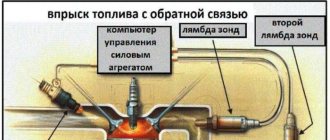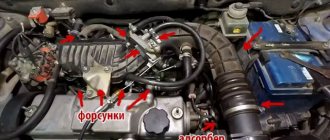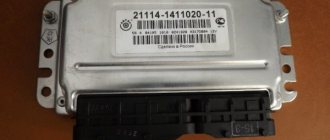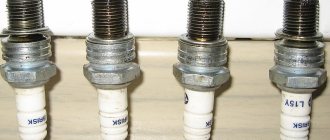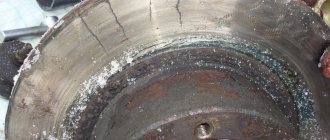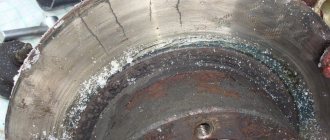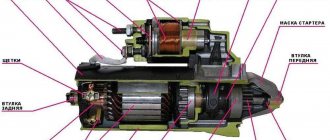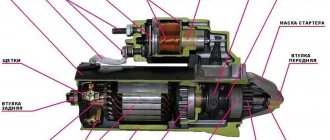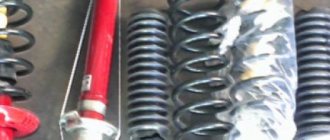This article will tell you everything you need to know about the P0171 code. You will also learn how to diagnose and fix the error yourself in the easiest and fastest way.
There is a lot of misinformation about the P0171 code and a lot of dubious advice on how to fix it. In this article, we will tell you how to properly diagnose this error code in order to find solutions as quickly as possible.
What does error code P0171 mean?
P0171 is triggered when the front oxygen sensor detects a lean mixture. This can be either a short-term or a permanent lean mixture.
The front oxygen sensors regulate the fuel mixture that leaves the engine. If the oxygen sensor detects a slight lean or rich mixture, it sends a signal to the engine control unit to adjust the mixture in the next combustion cycle to obtain the ideal fuel mixture for better fuel economy.
Oxygen sensors typically have a range of +/- 15% to adjust the fuel mixture.
If the fuel mixture is outside this range, the O2 sensor will not be able to adjust the mixture. The engine control unit (ECU) will initiate and store a fault code in memory. If the mixture is lean, error code P0171 will be triggered.
If the mixture is rich, then you will have a P0172 code. If you have a V-twin engine or two O2 sensors, you may also see a P0174 code, which means the mixture is also lean, but on the second cylinder bank.
Symptoms of code P0172
Depending on the nature of the problem, P0172 may or may not be accompanied by drivability problems. At the very least, you will get better fuel economy because when the ECU is in limp mode, it no longer uses feedback from the sensors to adjust the mixture.
In severe cases, you may notice rough idling, lack of power when accelerating, even misfiring or stalling. Symptoms gradually worsen as the engine warms up.
The worst cases may be accompanied by black smoke from the muffler and a flashing warning light, warning you of possible catalytic converter damage.
You may also smell a strong fuel odor and see black soot on the tailpipe or rear of the vehicle, which indicates that there is a lot of unburned fuel passing through the exhaust system.
Symptoms of P0171
If the fuel mixture is slightly lean, you will rarely have any other P0171 symptoms other than a "Check Engine" on your dashboard. If the mixture is very lean, the following signs may appear:
- "Check Engine" light is on.
- Hard idling or acceleration.
- Loss of power.
- Misfires.
- Low/high/floating speed XX.
- Difficult start.
- The engine may stall while driving.
P0171 Causes
There are many sensors or parts that can cause a P0171 code and a lean mixture. You will find the list below. And we'll start with the most common places to check when you have a lean fuel mixture. It is important to check for other trouble codes besides P0171. This may give you a clue as to where to start looking for the problem.
- You can read fault codes using a diagnostic scanner or an ELM327 adapter with the Torque program.
- Intake air leak (most common).
- Faulty PCV valve (PCV - positive crankcase ventilation system; often found on VAG cars such as Audi, VW, Seat, Skoda).
- Low fuel pressure (caused by a weak fuel pump, filter or fuel pressure regulator).
- Faulty EVAP valve (EVAP - gas tank ventilation system).
- Faulty O2 sensors.
- Faulty EGR valve (exhaust gas recirculation valve).
- Faulty MAF sensor (mass air flow sensor - MAF).
- Exhaust gas leak (in front of front oxygen sensors).
- Coolant temperature sensor.
- Faulty sensor wiring.
- Malfunction of the ECU/ECM/PCM control unit (rare).
P0171 Possible solutions
There are many different solutions for the P0171 code. We will describe them, starting with the most common. Diagnostic tools that can help you troubleshoot problems are described in the diagnostics section below.
- Replace faulty vacuum hoses or gaskets around the intake manifold.
- Repair other intake leaks.
- Replace the PCV valve.
- Replace the fuel pump/fuel filter/fuel pressure regulator or repair the wires.
- Replace EVAP valve.
- Replace oxygen sensors.
- Replace the EGR valve.
- Replace the mass air flow sensor (MAP/MAF).
- Repair exhaust leak.
- Replace the coolant temperature sensor.
- Repair of faulty wires.
- Replace the ECU (ECM/PCM, rare).
Error conditions
New Lada: LADA Granta liftback. Keeps his word
The engine must be started and the fuel supply occurs with feedback from the oxygen sensor (lambda probe), and there is no error from the coolant sensor, intake air temperature sensor, absolute pressure (MAP - sensor), DPPV, DPKV and throttle position sensor. When the average total values of short-term and long-term fuel trims are less than 33% for just over 3 minutes out of the 7th test period. The indicator light on the instrument panel will go out only if the diagnostics does not detect a failure after three test cycles.
Error Resolution Table
| Problem | Symptoms | Causes | Solutions |
| Error P0171 | Check Engine Rough idling or acceleration Loss of power Misfire Low/high/floating speed XX Difficult to start Engine may stall while driving | Intake air leak (most common) Faulty PCV valve (common on VAG: Audi, VW, Seat, Skoda) Low fuel pressure (caused by weak fuel pump, filter or fuel pressure regulator) Faulty EVAP valve Faulty EGR valve Faulty O2 sensors Faulty MAF Coolant temperature sensor Faulty sensor wiring Faulty ECM/PCM (rare) | Replace faulty vacuum hoses or gaskets around the intake manifold Repair other intake leaks Replace the PCV valve Replace the EGR valve Replace the fuel pump/fuel filter/fuel pressure regulator or repair the wires Replace the EVAP valve Replace the oxygen sensors Replace the air flow sensor Repair exhaust leak Replace the coolant temperature sensor Repairing faulty wires Replace the ECU (ECM/PCM, rare). |
How to diagnose P0171?
Since the P0171 trouble code means the vehicle is running lean, it can be caused by many different sensors or faulty parts.
This guide is about how to fix the P0171 code the fastest way and what an experienced mechanic will do to find the problem. When performing these steps, you may need some tools to quickly and effectively troubleshoot problems. But you can do without them, try following the instructions.
1. Connect the charger to the car
The first step you should always take when diagnosing a car. You will often turn on the ignition while troubleshooting, and the vehicle voltage should not be low.
Low voltage may cause other unrelated trouble codes. In rare cases, low voltage can even damage electronics, so always use a charger when diagnosing.
2. Check all sensor parameters using an OBD2 scanner
If you have an OBD2 scanner, you can check all sensor parameters. Just check the values of the MAF, coolant temperature, boost pressure, intake temperature sensors and make sure the values are correct.
Many scanners have tables of base values that should be displayed at certain speeds and temperatures. Also, check the oxygen sensor parameters and make sure they are correct. Replace faulty sensors, clear error codes and try again.
You can also do it the old fashioned way and measure all the sensors with a multimeter. This will take a very long time and you have to find which values are correct. If possible, we always recommend using an OBD2 scanner.
3. Check for other fault codes
If you have measured all sensor parameters and are satisfied that they are correct, check for other stored and associated fault codes in the controller. They can tell you where to start your search.
Many problems with sensors occur periodically. When you check them, you get normal parameters, but while driving they may not work correctly and cause a P0171 code.
The control unit is smart. It recognizes the faulty value in just a second and this triggers a fault code. These are the trouble codes you should be looking for. If you receive another error code from any sensor, you need to start checking with the corresponding part of the car first. This can save a lot of time.
Check for inlet leaks
Air leaks are a common problem when it comes to the P0171 code. Leaks in the intake manifold/vacuum hoses/turbocharger can fool the MAF sensor and cause the mixture to lean.
The mass air flow sensor measures all the air entering the engine and reports this amount to the controller. The ECU then injects fuel into the engine depending on the amount of air. A leak can distort this value, resulting in a lean mixture.
The easiest way to find a leak is to use a smoke generator. They, unfortunately, are quite expensive for the car enthusiast. You can make a smoke generator yourself.
Video on how to find air leaks at home without a smoke generator:
And one more piece of advice. You can use a flammable spray like Quick Start or brake cleaner. Spray around the intake while the engine is idling. If the RPM increases, there is a leak in the spray area. For the same purposes, you can use a soap solution.
An air leak can often be found in the PCV valve, especially on VAG vehicles such as Audi, Volkswagen, Seat and Skoda. If you have one of these cars, check the PCV valve under the intake manifold or on top of the engine on newer 2-liter engines.
PCV valve
You should also check the EVAP valve, which controls fuel gases. A leaky or faulty EVAP valve can cause a lean mixture. You can test this valve by blowing through it to see if it is closed or not when it should be.
The problem often occurs in the hose between the intake manifold and the fuel pressure regulator. This causes low fuel pressure and sets the P0171 code.
Check fuel pressure
Low fuel pressure is a common occurrence with the P0171 code. Troubleshooting this problem can be quite difficult because you often check the fuel pressure only at idle. Low blood pressure can occur in other situations. This is usually solved by connecting a pressure gauge.
Many cars have a fuel pressure sensor that allows you to monitor the pressure while driving. But the problem is that this sensor may also be faulty. In this case, the controller will show a low fuel pressure error.
In any case, you need to check the fuel pressure at idle. This may indicate a faulty fuel pump or fuel filter. To check, you will need to connect a pressure gauge to the fuel line.
You should find out what pressure your car has. Disconnect the vacuum hose between the intake manifold and the fuel pressure regulator to obtain the correct value. You can ask a partner to rev the engine to see if the fuel pressure drops.
6. EGR check valve
An open EGR valve when it should be closed can fool the air flow sensor and cause a lean mixture. Checking the EGR valve can be a challenging task. This usually requires removing it or using a smoke generator.
Many OBD2 scanners have an electronic EGR test function. They check the air entering the engine as it opens and closes. This can often help locate a faulty EGR valve because the test will give a positive or negative result.
The ECU often recognizes faulty EGR valves and stores a fault code stored in the controller's memory, but not in all cases. So it's better to double check it. Faulty EGR valves causing P0171 are common on Opel engines. Clogged EGR lines on Opel engines can also cause this.
Here is a video on how to check the EGR valve:
Checking air leaks at the outlet
Air leaking into the exhaust system in front of the oxygen sensors can fool them and cause code P0171. To check for this, the easiest way is to start the engine and listen carefully for any leaks in front of the O2 sensors.
You can have someone plug the exhaust pipe to create pressure in the exhaust system. If you have a smoke generator, everything is even easier. Simply connect it to the rear exhaust pipe and check for smoke from potential leak areas.
It could also be the oxygen sensor that is causing the P0171 code, but this is something you should have already checked in the previous diagnostic steps.
Clean the mass air flow sensor (MAF)
Fine dust may pass through the air filter and collect on the sensor. This may cause the sensor to give incorrect readings of the amount of air entering the engine.
Cleaning the air flow sensor is often sufficient. This can be done using electrical contact cleaner or air flow sensor cleaner. You need to spray the cleaner on the sensor inside the housing.
Finding Vacuum Leaks
Air leaks can occur in any of the hoses that are connected to the engine intake manifold. Vacuum leaks are also possible through the intake manifold gaskets, throttle body, corrugation between the air filter and the throttle valve, injector O-rings, and idle air control.
Pay attention to such components as the crankcase ventilation system, the fuel system absorber, the vacuum brake booster and all the hoses that are connected to them. The cause of the problem could even be a crack in the exhaust manifold, through which excess air gets in before the oxygen sensor. This can also negatively affect the correct formation of the fuel-air mixture.
The simplest and most effective method of finding air leaks is to use a smoke generator. This device is easy to make at home, there are many instructions on the Internet, use one of them.
What is a "lean mixture"? This is an air-fuel mixture containing a LOT of air and a LOT of gasoline. Based on this information, you need to start looking for the causes of error P0171.
Let's start with the first one - too much air. Injection vehicles are equipped with air flow meters (MAF or DAMV). It is installed immediately after the air filter and counts all the air that is sucked into the intake manifold to form the air-fuel mixture. Based on the readings of this sensor, the controller knows how much air has passed and how much gasoline it needs to supply for a given amount of air.
If excess air enters the intake manifold, not taken into account by the flow meter, then there will be more air and, as a result, we get a lean mixture . The most difficult thing is that it is quite difficult to find where exactly this unaccounted air is sucked in.
The main places for air leaks are the intake manifold gasket, throttle body gasket, corrugation from the filter to the throttle body, IAC, injector O-rings, vacuum brake booster, canister valve.
And now we’ll look at 3, in my opinion, the most effective methods for finding air leaks into the intake manifold.
Conclusion
- Intake air leaks are often the cause of P0171. And it needs to be checked first. The easiest way to check is to use a smoke generator. But there are also alternative methods.
- Low fuel pressure also often causes a P0171 code and should be checked with a manual fuel pressure gauge.
- A faulty PCV/EVAP is common on VAG vehicles such as Audi, VW (Volkswagen), Skoda and Seat. It should be checked if you have one of the machines listed.
- Faulty EGR valves are common on Opel engines. If you have such a car, first check the exhaust gas recirculation valve.
- Multimeters can be bought: here and here. Car chargers - here and here.
Previous post Error P0174 - what it means, symptoms, causes, diagnosis, solution
Next entry How to find air leaks at home
How to find an air leak
First method. It is the simplest, it allows you to find out whether there are any air leaks at all and does not require absolutely any equipment. All we need is just the key for “10”. You need to unscrew the mass air flow sensor from the air filter and pull it out together into the corrugation.
Now we start the engine and, using the palm of our hand, completely block the air inlet into the intake manifold through the mass air flow sensor. The corrugation should shrink from the vacuum and after a couple of seconds the engine will stall. We don’t let go of our hand and listen for where things hiss—this is an extra air leak (more details in the video below).
Second way. Here we need some kind of flammable liquid - gasoline, ether, WD-40, carburetor cleaning fluid, etc.
It is best, of course, to use gasoline or ether, they are more natural for engine operation. We fill a syringe with gasoline or take a can of any of the above liquids and spray all the connections of the intake manifold. If any of the connections are not sealed, then the liquid will definitely get inside the manifold and the engine speed, at the same time, should change (either decrease or increase).
If the engine does not react in any way, then the connection is sealed, there are no problems with it and you need to look further. Well, if the engine starts to react, consider half the job done. We change the gasket or hose and rejoice that error P0171 has disappeared.
The third method is to use a smoke generator. If you don’t have such a thing in your garage, you can ask your friends for it or make it yourself. There are many options for making smoke generators on the Internet. I chose the simplest and fastest - a smoke generator made from a regular cigarette.

